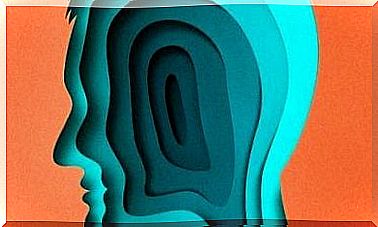Social Emotions: What Is Envy Really?

We all know about envy, a social feeling we can see in action every day. Although it has a negative connotation in most cases, it also has important features. Psychology teaches us that emotions are not bad or good (outside of mental illness), they can only be pleasant or unpleasant. In addition, they always play a role. But what is envy?
Envy – in its simplest form – is represented in a three-way relationship with inequality. This relationship consists of two people and one object. And when one of these people has the object and the other wants it, but it does not happen, there is inequality. This is a feeling that involves social comparison.
Social comparison
People live in complex societies, where social status affects their lives. Therefore, it makes sense, from an adaptive point of view, that we are concerned about our social life. This is where social comparison is born, in an attempt to be better positioned and have better social resources.
Social comparison can take place in two ways: (a) ascending, comparing ourselves to people who are or who we perceive to be better than us. Or (b) downward, compare us with those who are or who we perceive to be worse than us. Each of them fulfills a function and has its reasons. But for the study of envy, we are interested in the upward comparison: we envy those who have something we want.

What is envy?
So, what is envy really? It is a painful social feeling in that it is a product of relationships with inequality. As we have mentioned, it is related to social comparisons and self-evaluation. For this reason, we can sometimes refer to it as a social thermometer. It allows us to calibrate our social status and act if it is not what we want.
Since it is sometimes openly expressed as a sign of admiration (I’m so jealous of you!), It’s normal that it’s not clear. In this sense, hiding this feeling is part of our social protocol. This fulfills two clear functions. On the one hand, the envious person prevents his lower status from being made public and protects himself against a possible fall in value; and the other avoids threatening the person who is the object of envy.
The purpose of this feeling can refer to a large variety of elements. It can contain assets, but also personal qualities or recognition. It becomes an envy when a person does not have it, but wants it, and sees that another person has it. The desire comes mainly from an attempt to overcome a bad or disadvantageous position. That is, we do not want it because of what the object is, but because of what the object represents.
Now, how can we react when we feel envy? This is where the two types of jealous responses and their consequences come in. We talk about this in the next section.

Types of envy
There are two main types: benign and malignant (also known as malignant). Benevolence appears when the jealous has bad feelings when one sees the other’s success, but does not want bad things for them. This type of behavior causes behaviors aimed at improving the envious person’s status. They can achieve this by becoming the object of envy without interfering with the person they envy.
With malicious jealousy, in addition to having what the other person has, they want bad things for them. There is no behavior aimed at improving; their behavior will try to devalue the object of envy, or even reduce the status of the envied person by removing the object.
Both types seek the same thing, the envious person will have a status equal to or greater than the envious one. With malicious envy, it is achieved by reducing the envious status. With benign envy, it happens by increasing the status of the envious person. Although the first is social in nature, we must not forget that hurt joy is also a feeling that is very present in our lives.
Now that we know the answer to “What is envy?”, Here is a question to think about: when we envy another person, what do we feel most, benign envy or hurt joy?









